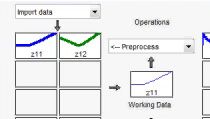What Is System Identification? | System Identification, Part 1
From the series: System Identification
Brian Douglas, MathWorks
Get an introduction to system identification that covers what it is and where it fits in the bigger picture. See how the combination of data-driven methods and physical intuition can improve the model with so-called grey-box methods. Explore the components of a mathematical model and look at the differences between the white-box method and the black-box method for developing a model of a physical system. Finally, learn the difference between identifying a dynamic model from data versus just fitting a curve to the data.
Published: 10 Nov 2021





